Posts Tagged: Jason Bond
Silk Textile Displays Grab Attention at Bohart Museum's Moth Night
"Silk is a natural protein fiber, some forms of which can be woven into textiles. The protein fiber of silk is composed mainly of fibroin and is produced by certain insect larvae to...

Bohart Museum associate Michael Pitcairn, retired from the California Department of Food and Agriculture, answers questions about silkworm moths and textiles. (Photo by Kathy Keatley Garvey)
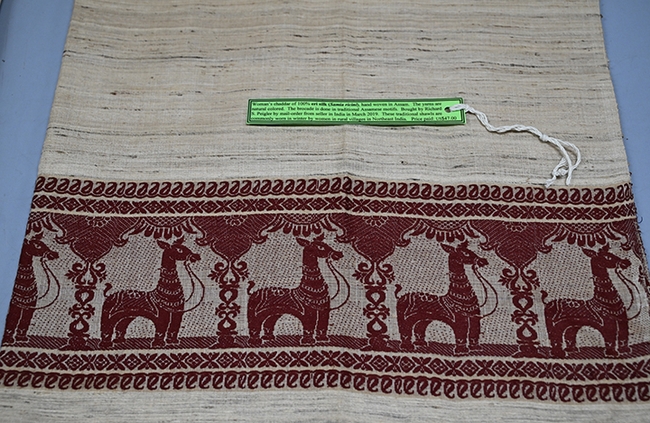
This chaddar is made of rri silk (silkworm moth, Samia ricini) and handwoven in Assam, India. (Photo by Kathy Keatley Garvey)
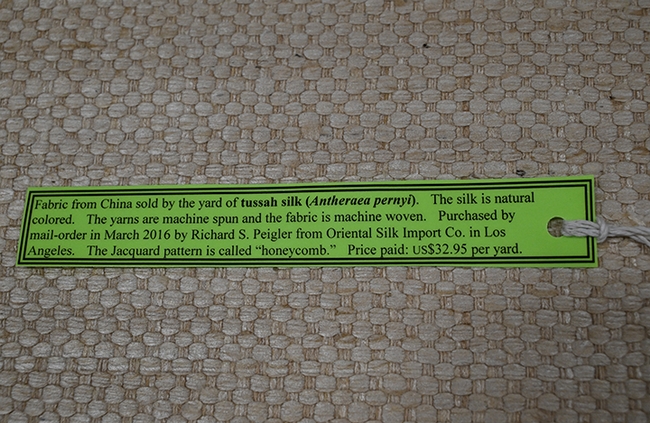
This is tussah silk fabric in a pattern called "Honeycomb." Donor Richard Pleiger purchased this fabric from a Los Angeles company for $32.95 per yard. There are several species of tussah silk moths (family Saturniidae) in China, India, Japan, Africa and North America.(Photo by Kathy Keatley Garvey)
Moths and Butterflies: What Are the Differences?
What are the differences between moths and butterflies? That was a key question asked at the Bohart Museum of Entomology's annual Moth Night, held both indoors and outdoors on the UC Davis campus on Saturday, July 20. Doctoral student Iris...
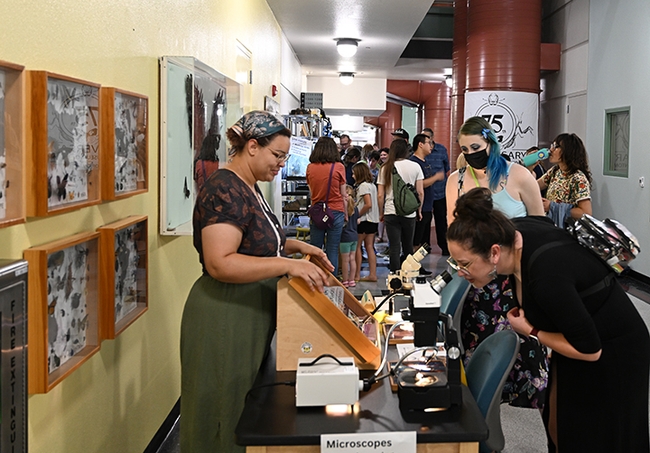
Iris Quayle of the laboratory of Jason Bond, director of the Bohart Museum, explains the differences between moths and butterflies. (Photo by Kathy Keatley Garvey)
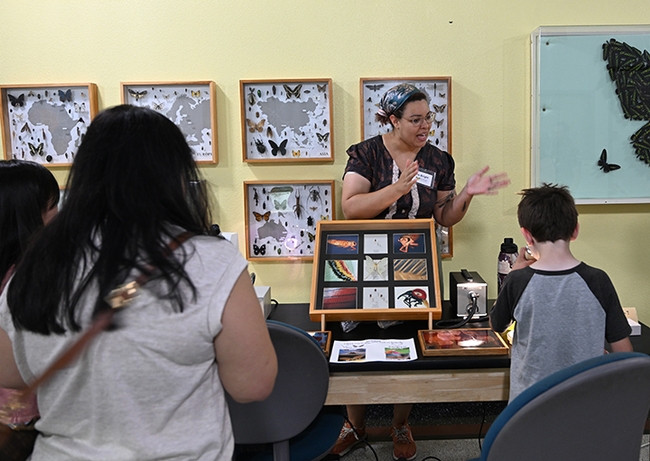
UC Davis doctoral candidate Iris Quayle answering questions from the visitors at the Bohart Museum open house. (Photo by Kathy Keatley Garvey)
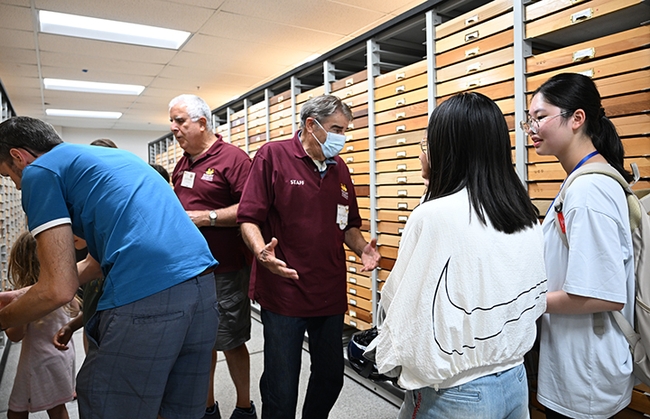
Jeff Smith (left), curator of the Lepidoptera collection at the Bohart Museum, and Bohart associate Greg Kareofelas talk to open house attendees and show moth specimens. (Photo by Kathy Keatley Garvey)
Blacklighting at the Bohart: They Saw the Light
They saw the light. The insects, that is. Bohart Museum of Entomology research associate John "Moth Man" De Benedictus and colleagues set up a blacklighting display during the Bohart's annual Moth Night, held July 20, hoping to find...
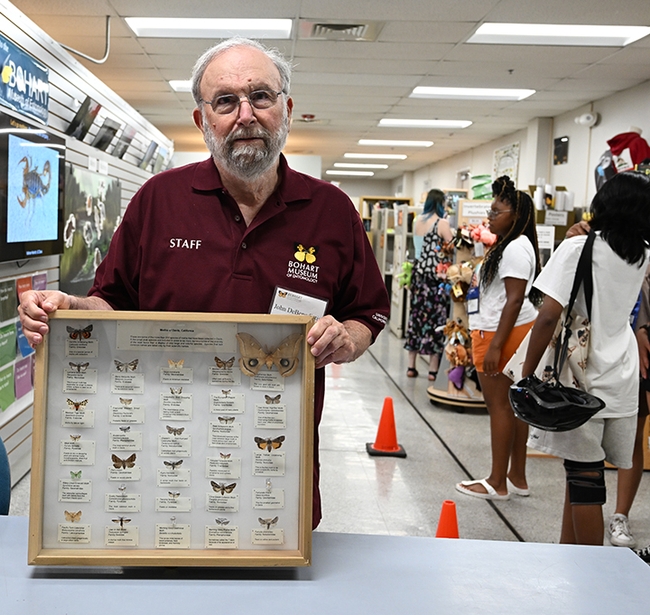
John "Moth Man" DeBenedictus, a research associate at the Bohart Museum of Entomology, showed part of his moth collection at the Bohart open house. (Photo by Kathy Keatley Garvey)
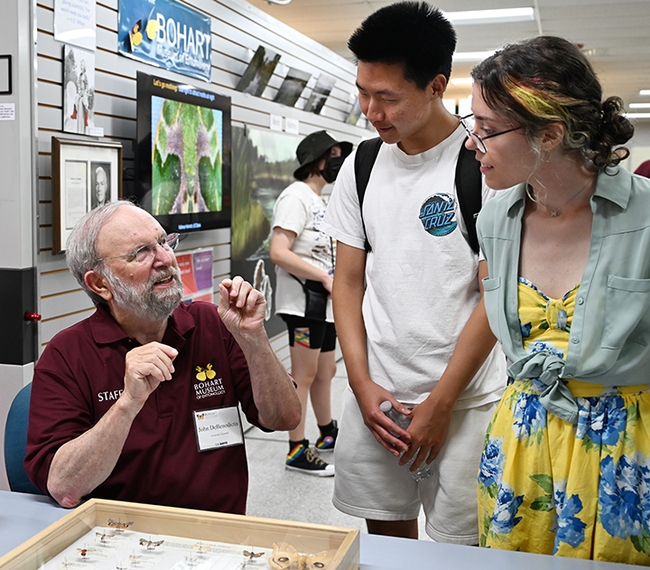
John "Moth Man" DeBenedictus, answers questions at the Bohart Museum of Entomology Moth Night. (Photo by Kathy Keatley Garvey)
Don't Miss Bohart Museum Open House on Moths!
You won't want to miss the Bohart Museum of Entomology Moth Night on Saturday, July 20. So much to see and do, and so many moth experts will be on hand to answer your questions. It's all in keeping with National Moth Week. The...
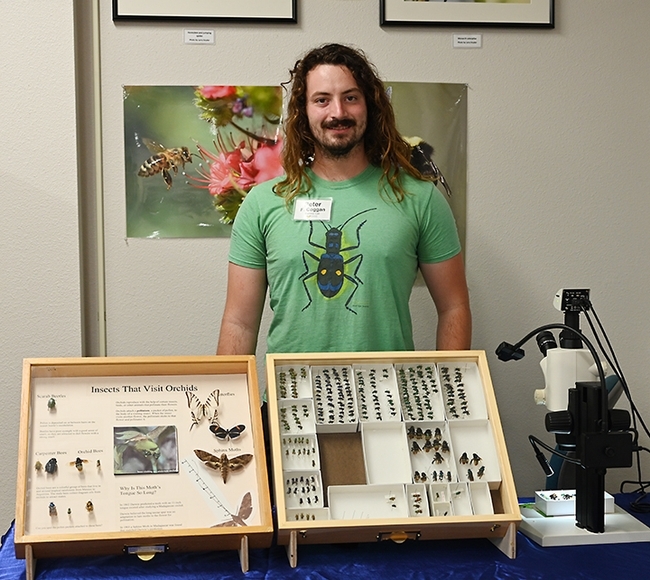
UC Davis doctoral student Peter Coggan (Photo by Kathy Keatley Garvey)

Peter Coggan of northern Minnesota is a moth'er and a member of the board of the Minnesota chapter of National Dark Skies. His son, Peter, also a moth'er, is a UC Davis doctoral student.
'Let's Go Mothing' on July 20 at Bohart Museum of Entomology
Let's go mothing! What's mothing? The National Moth Week website describes mothing as "a hobby for nature enthusiasts who use light or bait to attract moths to a location for observation and data collection." So, in keeping with National Moth...

This colorful moth is Arctia virginalis, Ranchman's tiger moth, a diurnal or day-flying moth commonly known as the Ranchman's tiger moth. In its larval stage, it's a wooly bear caterpillar, commonly found at the Bodega Marine Reserve and on the trails of Bodega Head, Sonoma County. (Photo by Kathy Keatley Garvey)

This is California Pyrausta Moth (Pyrausta californicalis), commonly known as "the mint moth." It feeds on plants in the mint family, including spearmint and peppermint. (Photo by Kathy Keatley Garvey)

This is a pterophorid plume moth (family Pterophoridae). The "T-square" shape is classic. (Photo by Kathy Keatley Garvey)

This is a white-lined sphinx moth (Hyles lineata), which flies during the day and night. (Photo by Kathy Keatley Garvey)

